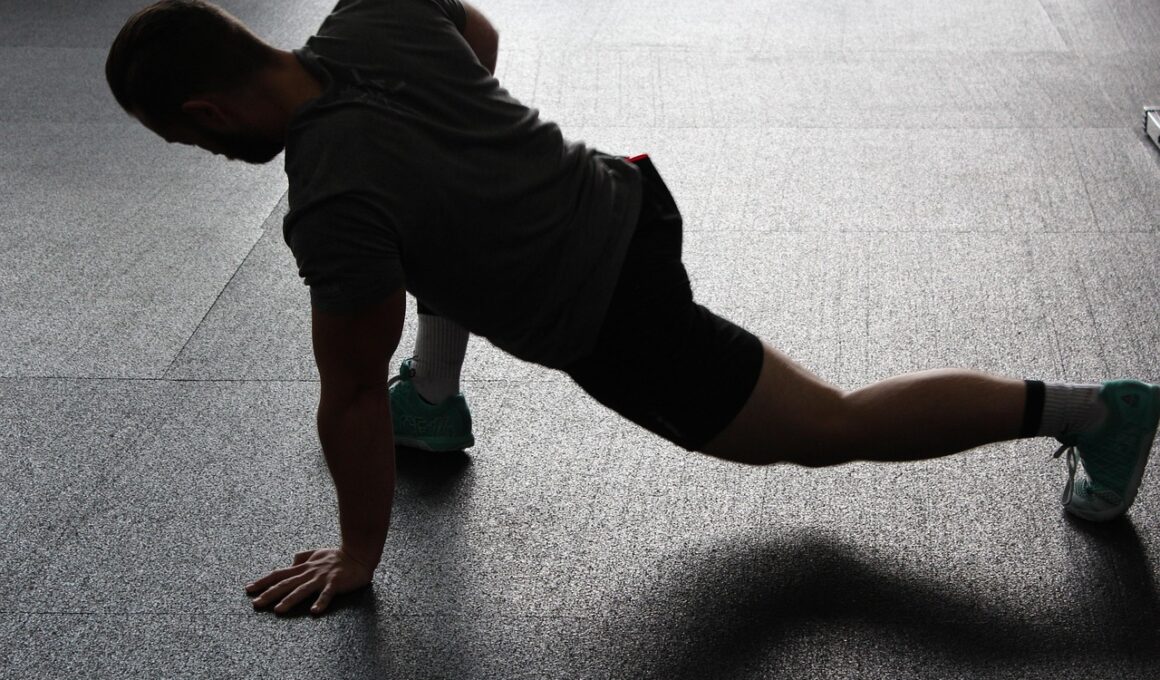The Importance of Warm-up and Cool-down in Weightlifting
When engaging in weightlifting, warm-up and cool-down routines are pivotal for optimal performance and injury prevention. A warm-up increases blood flow to the muscles, enhancing their elasticity and preparing them for the stresses of lifting. This practice also raises core body temperature, which improves metabolic activity and encourages overall better function. By performing dynamic stretches and light aerobic activities, athletes can activate the necessary muscle groups, ensuring they are physically and mentally prepared to lift weights effectively. Skipping a warm-up can lead to muscle strain and decreased performance. A systematic warm-up helps improve coordination and mental focus during workouts, enhancing the overall weightlifting experience and effectiveness.
After lifting weights, cooling down plays an equally vital role in recovery. The objective is to bring heart rates gradually back to normal levels while promoting flexibility and reducing muscle soreness. Incorporating static stretching into the cool-down process alleviates tension built up during lifting and may help prevent delayed onset muscle soreness (DOMS). A proper cool-down routine can also improve recovery time, enabling athletes to train effectively in subsequent sessions. Additionally, it promotes overall flexibility, which is crucial for lifting performance over time. Athletes should spend several minutes after training allowing their heart rates to stabilize and stretching targeted muscle groups used during the workout to minimize tension.
Types of Warm-up Exercises
Dynamic warm-up exercises are essential before weightlifting. These exercises include movements that mimic lifting motions without weights, such as bodyweight squats, lunges, and arm circles. Engaging in such activities activates muscle fibers and increases joint mobility, helping to prevent injuries while lifting heavier weights. The primary goal is to prepare both the body and mind for the upcoming physical exertion. Another effective warm-up approach is mobility work, which focuses on improving the range of motion in joints and muscles, especially focusing on areas like hips, shoulders, and ankles. A thorough warm-up can be the difference between a successful lifting session and potential injury.
Incorporating sport-specific movements during the warm-up phase can further enhance performance. For example, performing snatch-grip deadlifts with an empty barbell can engrain proper lifting techniques while warming up the posterior chain muscles. These sport-specific drills not only activate muscles but also contribute to muscle memory, allowing for better lifting patterns as the athlete progresses. Successful lifters often emphasize the importance of customizing warm-up routines according to individual needs, such as flexibility levels and prior injuries. Consequently, each athlete should develop a unique warm-up routine that best addresses their requirements, helping them to maximize performance while minimizing potential injuries.
Exploring Cool-down Techniques
Following intense weightlifting sessions, it is vital to incorporate various techniques into the cool-down period to ensure effective recovery. A well-rounded cool-down routine may include a brief walk to gradually restore the heart rate, followed by focused static stretching to enhance muscle relaxation. Stretching major muscle groups, specifically targeting the ones engaged during the workout, plays a significant role in reducing tension and promoting flexibility. It is essential to hold each stretch for at least 15-30 seconds, allowing muscles to elongate and relax. In addition, foam rolling is an effective self-myofascial release technique to alleviate tightness and knots throughout the body after lifting.
Hydration is another crucial element during the cool-down phase. After an intense weightlifting session, the body loses fluids through sweat, and replenishing those fluids is important for recovery. Drinking water or electrolyte-replenishing beverages helps restore hydration levels and supports muscle recovery. It is essential to avoid heavy meals immediately after exercising as digestion competes with recovery processes. Instead, athletes should aim for nutrient-dense snacks that provide essential protein and carbohydrates to aid muscle repair. Timing nutrition around workouts can significantly impact recovery, making it an essential factor for athletes incorporating proper cool-down techniques into their routine.
Benefits of Implementing Warm-up and Cool-down
Integrating both warm-up and cool-down sessions into a weightlifting routine yields numerous benefits. Firstly, these practices minimize the risk of injuries, which can lead to extended periods away from training. Additionally, they enhance performance by ensuring that muscles are fully prepared for lifting and recover more effectively post-workout. Improved flexibility translates to better lifting mechanics, providing lifters with an advantage during training sessions. Furthermore, adopting a consistent warm-up and cool-down routine can cultivate a positive mindset, as lifters associate these practices with better results and improved overall well-being. Prioritizing warm-up and cool-down sessions is an investment in long-term athletic development.
In conclusion, never underestimate the value of a proper warm-up and cool-down in weightlifting, as these practices are indispensable for enhancing performance and preventing injuries. Athletes should pay attention to their warm-up preparations, focusing on various techniques essential for maximizing their lifting capabilities. Likewise, cool-down should be seen as equally important for recovery. Therefore, by prioritizing these practices, athletes can foster physical growth, maintain discipline, and develop efficient training habits that promote overall success in their weightlifting journey.


